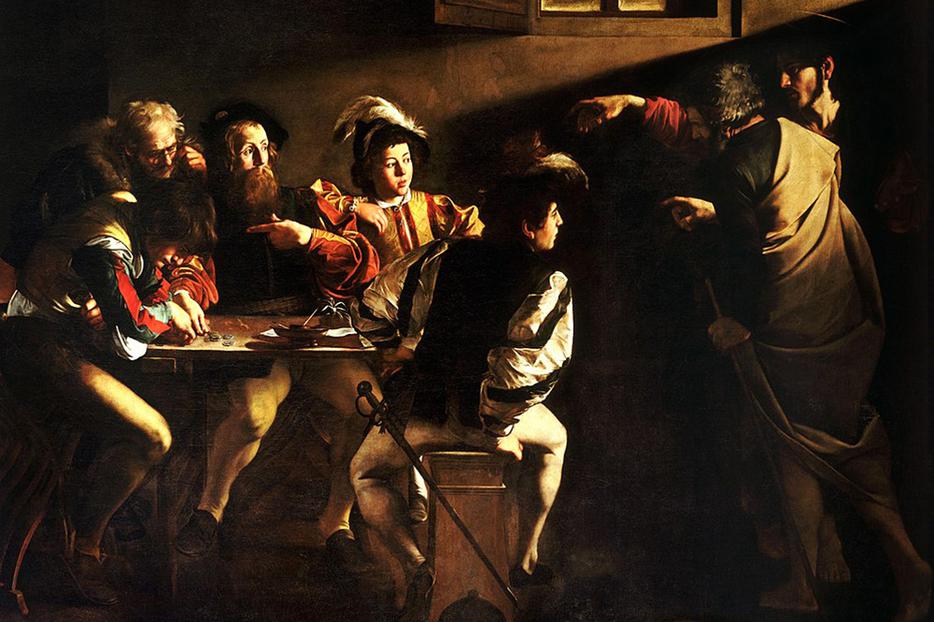He Chose Us in Him
User’s Guide to Sunday, July 11

Sunday, July 11, is the 15th Sunday in Ordinary Time. Mass Readings: Amos 7:12-15; Psalm 85:9-10, 11-12, 13-14; Ephesians 1:3-14; Mark 6:7-13.
“He chose us in him, before the foundation of the world.” These words from the second reading (Ephesians 1:3-14) for this 15th Sunday in Ordinary Time are anything but ordinary. They evoke in one’s imagination the Triune God existing outside of time and choosing each one of us in love. God has known from all eternity that you were going to exist at this time and has been eternally choosing you. St. Paul speaks of our “adoption to himself through Jesus Christ,” an adoption that occurs at our baptism. The Lord lavished upon us the “riches of his grace” to help us live out his will for us. We are chosen.
The painting The Calling of St. Matthew by the Baroque Italian painter Caravaggio depicts the moment that Jesus revealed to the tax collector Matthew that he was chosen. People have discussed for centuries which of the figures in the painting is Matthew. Matthew might be the bearded man sitting up in surprise pointing to his chest, questioning if Jesus is actually calling him. His thoughts might be, “Me? Why me? I am a tax collector, a persecutor of my own people.” Or the finger of the bearded man might be pointing to the young man at the end of the table, hunched over the coins, his head down in shame. He will not even look at the Lord, who is calling him to a new life, ready to forgive the sins of his past. He might ask, “Do you really mean to ask a sinner like me? What good can I do on your behalf?” We know from Scripture that Matthew promptly rises and follows Jesus (Mark 2:14).
This theme of being chosen is in the other readings for this Sunday. When we encounter Amos in the first reading (Amos 7:12-15), Amaziah the priest of Bethel is trying to send Amos back to Judah. Amos was chosen by God to prophesy against the northern kingdom of Israel under the reign of Jeroboam II in the eighth century B.C. Amos is unmoved by Amaziah’s anger and explains that it was false to call him a visionary. “I was no prophet,” he tells Amaziah. “I was a shepherd and a dresser of sycamores. The Lord took me from following the flock and said to me, ‘Go; prophesy to my people, Israel.’” Amos never planned to be a prophet, though perhaps as a shepherd and gardener he was quite fit to speak to a stubborn people. The Lord chose him before the foundation of the world, and Amos responds to this call.
In the Gospel (Mark 6:7-13), Jesus has a meeting with the Twelve, his chosen apostles, including St. Matthew, and gives them special authority to work miracles. He sends them out two by two to preach repentance.
All the Twelve were chosen for this before the foundation of the world.
Like St. Matthew in the painting, we may wonder at the Lord choosing sinners to do his work. Or like Amos and the Twelve, we may be chosen to do something completely different than what we thought we would do.
The Lord’s plan for us is for our good, to show his kindness and to grant us salvation (see Psalm 85). Our redemption lies in knowing that we are chosen by God and embracing his plan for us, whether we expected it or not.

















